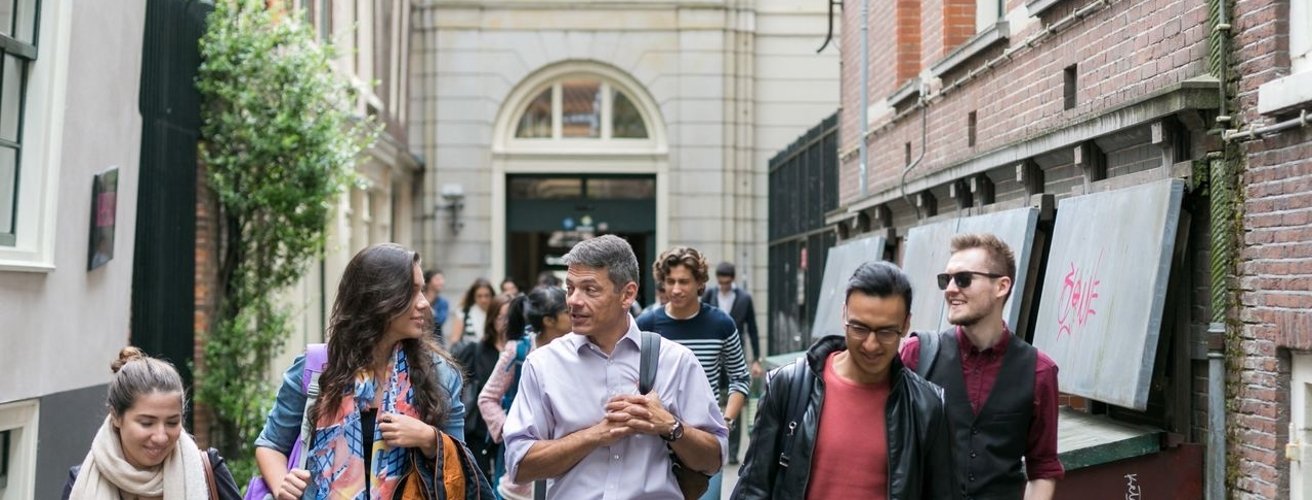PhD candidate in Computational Neuroscience (nr.2): Neurodynamics
PhD candidate in Computational Neuroscience (nr.2): Neurodynamics
You cannot apply for this job anymore (deadline was 24 Jul 2020).
Browse the current job offers or choose an item in the top navigation above.
Job description
The Cognitive & Systems Neuroscience group is seeking a highly qualified and motivated candidate for a PhD position in Computational Neuroscience, under a recently acquired grant for the third phase of the EU FET Flagship Human Brain Project (HBP SGA3), coordinated by Prof. Cyriel Pennartz. The HBP is a large collaboration between European institutions, aiming to develop a research infrastructure for ‘computing the brain’ and applying this to experimental and theoretical neuroscience. The main objective of this PhD project is to develop a biologically realistic, dynamical computational model of multi-area cortical circuits involved in multisensory perception, categorization and sensory prediction. We will build a model constrained by state-of-the-art neuroanatomical and physiological data, which will include biologically relevant information such as cortical laminar structure, multiple cell types, and biologically realistic learning rules for synaptic plasticity. The model will mimic spiking and neural mass (LFP) activity in vivo, and categorize stimuli in multisensory tasks. Its computational predictions on neural activity will be compared to experimental data from collaborators. The project will be co-supervised by Dr Jorge Mejias, Principal Investigator of Computational Neuroscience, and Prof. Cyriel Pennartz. The candidate will also closely collaborate with other computational neuroscientists, experimental neuroscientists, theoreticians and machine learning experts.
What are you going to do?
You are expected:
- to perform research on multisensory perception, sensory prediction, object recognition and categorization using computational neuroscience methods;
- to acquire in-depth knowledge on neurophysiology, perception and computational neuroscience;
- to build biologically realistic multi-area cortical circuit models for multisensory perception and object recognition, and compare their predictions with experimental findings, including spike and local field potential data;
- to collaborate with other groups in the Human Brain Project, use simulation and high-performance computing resources and contribute to data and model curation;
- to take part in the teaching effort of the group, including supervision of bachelor and master students;
- to write scientific manuscripts and a PhD thesis.
We will base our selection on your scientific and/or technological track record, as well as on your academic achievements, qualifications, and vision.
Specifications
- max. 38 hours per week
- €2395—€3061 per month
- Amsterdam View on Google Maps
Requirements
- An MSc in computational neuroscience or closely related field with a focus on modeling biological neural systems. Alternatively, an MSc in Physics, Mathematics, Machine Learning (via Artificial Intelligence) or a closely related field, and a clear background or affinity for brain modeling;
- strong quantitative and analytical skills, including calculus, linear algebra, differential equations, dynamical systems, stochastic processes and complex systems;
- strong computational/programming skills (preferably with Python), including numerical methods for differential equations, machine learning and neural network training;
- experience with neural simulation engines (e.g. NEST) and/or with the use of high performance computers is considered an advantage;
- concrete experience in a computational neuroscience modeling project;
- ability to read and understand relevant neuroscientific and cognitive literature and use experimental data to build models;
- ability to communicate effectively in English, within a multidisciplinary team and in an international context;
- a passionate interest to understand how the brain works at the level of neural dynamics, perception and cognition.
Conditions of employment
Our offer
A temporary contract for 38 hours per week, for the duration of 48 months (initial contract will be for a period of 18 months and after satisfactory performance evaluation it can be extended) and should lead to a dissertation (PhD thesis). We will draft an educational plan that includes attendance of courses and (international) meetings. we also expect you to assist in teaching of undergraduates.
Based on a full-time employment contract (38 hours per week) the gross monthly salary will range from €2,395 in the first year to €3,061 in the last year. These amounts are exclusive 8 % holiday allowance and 8.3 % end-of-year bonus. The Collective Labour Agreement of Dutch Universities is applicable.
Are you curious about our extensive package of secondary employment benefits like our excellent opportunities for study and development? Then find out more about working at the Faculty of Science.
Employer
University of Amsterdam
With over 5,000 employees, 30,000 students and a budget of more than 600 million euros, the University of Amsterdam (UvA) is an intellectual hub within the Netherlands. Teaching and research at the UvA are conducted within seven faculties: Humanities, Social and Behavioural Sciences, Economics and Business, Law, Science, Medicine and Dentistry. Housed on four city campuses in or near the heart of Amsterdam, where disciplines come together and interact, the faculties have close links with thousands of researchers and hundreds of institutions at home and abroad.
The UvA’s students and employees are independent thinkers, competent rebels who dare to question dogmas and aren’t satisfied with easy answers and standard solutions. To work at the UvA is to work in an independent, creative, innovative and international climate characterised by an open atmosphere and a genuine engagement with the city of Amsterdam and society.
Department
Faculty of Science – Swammerdam Institute for Life Sciences
The Faculty of Science has a student body of around 6,500, as well as 1,600 members of staff working in education, research or support services. Researchers and students at the Faculty of Science are fascinated by every aspect of how the world works, be it elementary particles, the birth of the universe or the functioning of the brain.
The Swammerdam Institute for Life Sciences (SILS) is one of the Faculty of Science’s largest institutes. Its approximately 240 scientists and staff members work in 16 research groups that perform excellent research centered on four themes: Cell & Systems Biology, Neurosciences, Microbiology and Green Life Sciences.
Specifications
- Education; PhD
- Natural sciences
- max. 38 hours per week
- €2395—€3061 per month
- University graduate
- 20-353
:fill(white)/logos/uva-en-wide.png)
